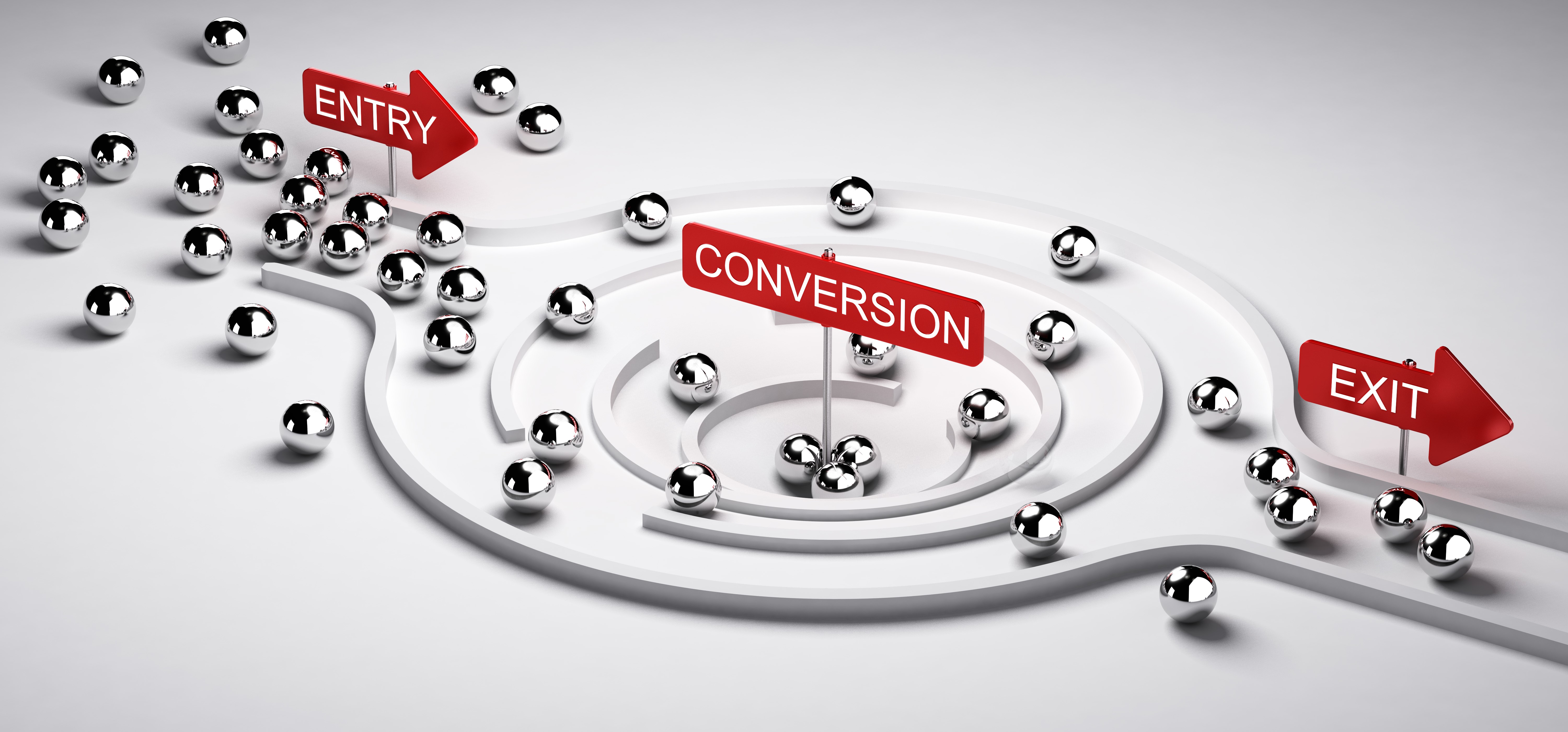The ABC’s of Marketing: Always Be Converting
Marketing Automation | conversion rate optimization | marketing funnel | A/B Testing | Marketing Planning | Split Testing | marketing metrics
In a recent presentation at the Marketing Membership and Communications Convention (MMCC) hosted by the ASAE Center for Association Leadership, two of HighRoad's very own senior digital advisors, Nicole Crilley and Emily Nash, spoke on the topic of optimizing marketing campaigns for results.
They presented to a captive audience of association marketers, program managers, and other professionals, looking to modernize the way they connect with their members and search for new ones. Here's a summary of their presentation.


Regardless of the conversion itself, you as an association will want to to collect critical data in order to calculate conversion rates. While you might use disparate systems that are single-use such as your website, Google Ads, or a form-building tool, it's much more efficient to use an integrated channel and data activation system like HubSpot + Spark to centralize your marketing data into one place.
From there, you can visualize and track all campaign information across all channels and have your metrics along the funnel calculated for you.
The conversion rate, reflected as the number of conversions divided by the total attempts (leads, clicks, views, etc.) is one of the most powerful metrics for a marketing team. Understanding the calculation, and its use, is of utmost importance.
- As a baseline to improve metrics for future campaigns. In other words, you can determine whether the changes you made to a campaign produced better results.
- To compare performance across different assets, channels, audiences, etc. For instance, if an ad to get event registrations has a 1% conversion rate but your email campaign has a 30% conversion rate, this is a notable difference. This variance influences marketing strategy and focus.
Because we are referring exclusively to digital channels, consider these the trackable pages a person clicks on to take them closer to the final conversion. For example, an email campaign for webinar sign-ups would look like this:

Building out your customer journeys like this not only helps put yourself in the customers’ and members' shoes, but helps uncover what you can improve to increase appeal and remove the friction from the sale.
For instance, if your members or customers:
- Duck out on the Agenda (Consideration) page in the graph above, you may want to connect with your program manager about content topics.
- Duck out on the Rates (Decision) page, it may be time to revisit your pricing strategy.
- Move on to the Registration/Cart page but don't complete the transaction in a timely manner, you may want to revisit the length of your form.
Following the patterns that surface from your customer journey gives you solid insight on what you may need to change from both a marketing and program perspective.
- Campaign #1: LinkedIn ad that costed $2,000, received 44,598 impressions, 833 clicks, and 10 conversions (submitted applications)
- Campaign #2: Google ad that costed $1,000, received 49,557 impressions, 309 clicks, and 8 conversions
- Campaign #3: Email campaign that had $0 up-front costs, 121,000 impressions, 21,780 clicks, and 435 conversions
Based on the raw data, conversion rates (total conversions divided by clicks) of each campaign is 1.2%, 2.6%, and 2% respectively. Your observations based on this information can be a few things:
- Email is the best for total conversion results and click-through rates
- Google Ads is expensive per click but offers the best conversion rate percentages
- LinkedIn has a low-cost per click and decent click-through rates but the lowest conversion rates
- Increase promotional budgets for future LinkedIn campaigns given the low cost-per-click numbers for LinkedIn Ads
- Continue email campaigns as your highest converting channel but test subject lines, copy, or offers to drive higher conversion rate percentages
- Test different design, layout, CTA, or image components on your Google ads to increase click-through rates while maintaining relatively high conversion rates.

The changeable components of a marketing campaign include:
- Subject lines
- CTAs
- Images
- Copy
- Content
- Layouts
- Offers
For example, if you’re building an email campaign for conference registrations, you might run two separate campaigns targeted to similar audiences, with subject lines as the only deviation.
If you find that one subject line performed significantly better than the other when looking at conversion rates, use the “better” campaign as your new A variable and try changing something else for your B variable.
As you keep running these split tests, you’ll continually increase your Conversion Rate Optimization (CRO) capabilities. By increasing CRO, you’ll extract the most value from your campaigns which, in turn, will maximize conversion rates. It's a cyclical effort that pays dividends in the end.
About Maneesha Manges
Maneesha Manges is a seasoned digital marketing professional with 20 years of experience working in multiple markets and global companies. Her prior experience includes consulting roles in digital marketing strategy, data analysis, field marketing and social media. Maneesha holds a Master of Business Administration degree in High-Tech Marketing from American University’s Kogod School of Business and a Bachelor of Arts degree in Economics from Concordia University in Montreal.






